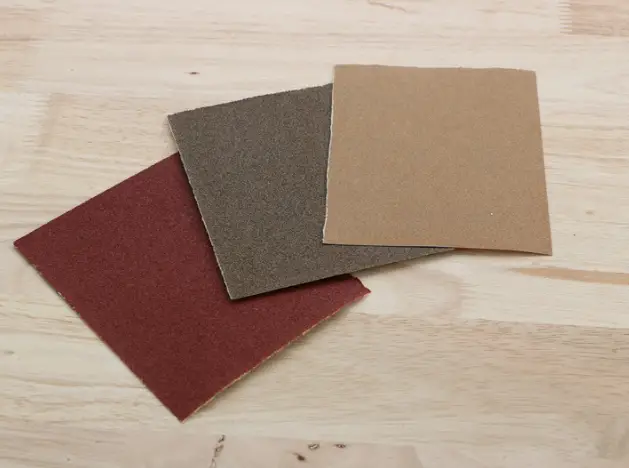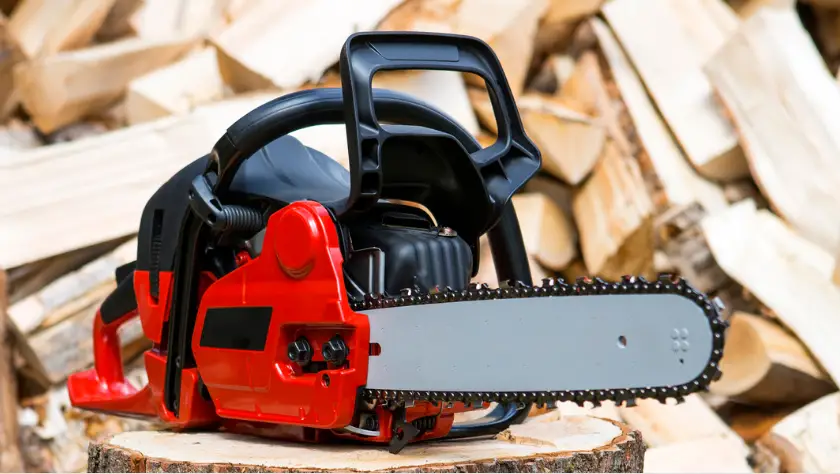I’m a great believer in using power tools to take the back-breaking work out of gardening. That’s why I bought myself a chainsaw, to make my life easier. The trouble is that it often gets caked in sap, resin, sawdust and debris that causes the plastic to become discoloured. And after a while, the bright colours start to fade.
Worse still, it can cause the surface of the plastic to begin to break down, meaning that you may need to replace the casing or get a new chainsaw!
Most people know that it’s important to clean the chainsaw chain, but if you really want your tools to last, it’s a good idea to remove that gunk that accumulates on the casing. And if you want to sell any of your old tools that are otherwise in good condition, you’re more likely to get a good price if they look great!
So, how do you clean chainsaw plastic to make it look almost new?
Let’s find out.
First Things First!
Before you begin any cleaning or maintenance on your chainsaw, you need to make sure it’s safe to do so:
- Petrol Chainsaws – Remove the spark plug, apply the chain brake and empty the fuel tank in a well-ventilated area (it’s wise to do this anyway if the machine is being stored for a long while). Allow it to cool down if you’ve just been using it.
- Corded Electric Chainsaws – Make sure that it is unplugged and well away from any sockets.
- Battery-Powered Chainsaws – Remove the battery and apply the chain brake.
Set the machine on a flat, stable surface so there’s no chance of it tipping while you work on it.
Once you’ve done this, it’s safe to proceed – there’s no chance of the unit accidentally starting while you’re working on it!
The Main Ingredient: Elbow Grease
Depending on how dirty your chainsaw is, you’re going to need a fair amount of this stuff. It’s either that, or buy new plastic casing, and not many of us are willing to go that far as it would be easier (and possibly cheaper) to get a new machine.
So, you’ll need to put in some effort and try a range of methods to get that plastic sparkling again.
Be Careful What You Use!
Of course, there are hundreds of forums out there on the internet where ‘experts’ suggest all sorts of weird and wonderful remedies. Some, surprisingly, are good. Others should be avoided at all costs.
The main issue is that chainsaw manufacturers use different types of plastics on their machines. Not all of them will stand up to the harsh chemicals recommended on these forums.
For example, acetone can be handy in breaking down resin, but it will melt most plastics. If you do try this method, test it on a small area first.
It’s also best to avoid using neat bleach, petrol or ammonia etc. I’m not sure which is the most alarming, but using petrol seems to be asking for trouble!
Many forums mention oven cleaner, but these are usually either too weak or too powerful. The stronger ones contain lye (sodium hydroxide) that reacts violently when it comes into contact with aluminium.
Here are some products that might be useful:
- Purple power
- WD-40
- Traffic Film Remover
- Car Polish
- Bumper SHine (by Turtle)
- LA’s Totally Awesome Cleaner
Bear in mind that these are just suggestions, and there are plenty of similar products. Essentially, they are industrial degreasers that break down dirt and oil so you can wash them off.
Some still contain sodium hydroxide, but in low concentration. You should be safe to use these, as long as you take care to avoid contact with aluminium parts.
Any of the cleaners listed above should be effective, though you will need a little effort and perhaps a couple of cleaning sessions to get the best results.
My recommendation would be to choose a good quality traffic film remover, as these are robust enough to do the job without any risk. Oddly enough, there’s a really good one called Gunk! Carplan also produces one called Demon Machine that’s worth a look.
Likewise with WD-40, which is pretty good at shifting stains and breaking down resin or sap accumulations. You can spray this lightly all over the plastic casing, or you can buy containers of WD-40 and tip some onto a cloth so you can wipe the machine down.
The trick is to leave it on for a while, say twenty minutes or more, and then wash it off with soapy water. Most people find that this works well, leaving the plastic looking nearly new.
The Process
If possible, it’s best to dismantle the machine and remove the casing. This allows you to soak the plastic in a solution of warm water and a cleaner of your choice.
You may need to scrape seriously dirty plastic to remove a build-up of resin. A putty knife or something similar with a wide flat blade is best so you don’t scratch the plastic surface.
For plastic that’s not too badly affected, you might get away with scrubbing it with a soft bristle brush and soapy water. Always make sure you rinse it off and dry it thoroughly with a clean cloth before storing the machine.
Wet Sanding
While it might seem drastic, many chainsaw owners restore the plastic casing by sanding it down using various grades of wet/dry sand paper. This method is usually reserved for severely stained chainsaws, but it does work.
A fine wet/dry paper, such as 1200-grit, is best. You might also choose to use a fine-grade steel wool. You might need to use a selection of different grades to get the right finish, but always try to work from a coarse grit to a fine grit.
After you’ve finished, rinse off any dust (or use a compressed air machine on a low setting) and allow it to dry before using a clear coat spray. Wet sanding can make the surface look rough and also makes it more porous, meaning that it will stain more quickly in future. A clear coat will add a shine and make the tool look much better.

Compressed Air
If you have a compressed air machine, this may be one of the easiest and safest ways of cleaning your chainsaw. Set the machine on a level surface (ideally, a work bench with the blade clamped to stop it from moving) before starting work.
Also, wear safety goggles! Trust me, you don’t want dirt, oil or sawdust blowing into your face at high speed.
Work your way over the chainsaw and really pay attention to the areas where dirt has accumulated. Give it a wipe down when you’ve finished and you’ll be amazed at the result.

A Good Opportunity
If you’re taking the time to clean the plastic casing, why not use this opportunity to make sure the rest of the machine is clean? Petrol chainsaws need more maintenance than any other kind, but all of them need care and attention.
Cleaning The Chain
A chainsaw chain is arguably its most important feature. If you don’t keep this in good shape, your machine isn’t going to function very well. Remove it and soak it in a solution of ammonia and water for a few hours to remove resin and sap.

Check The Air Filter (Petrol Models)
Remove the air filter cover regularly to see if the filter needs cleaning. You can use a paintbrush to clean this, or run it under a tap if it is excessively dirty.
Guide Bar
Dust and gunk accumulates around the groove, and this can be scraped out with a putty knife or thin screwdriver.
Cooling Fins (Petrol Models)
These help to cool the engine, so any debris here will make the unit overheat. Use a thin screwdriver or a paintbrush to remove dirt and dust. You could also use a compressed air can in short bursts.
Spark Plug (Petrol Models)
These can get very dirty over time as oil and debris work their way inside the casing. If this comes between the electrodes and the contacts, it will cause problems starting the engine or make it misfire while in use.
Remove the spark plug periodically and wipe it down, then scrub the electrodes with a wire brush.
Regular Maintenance
The best way to avoid having to deep-clean your chainsaw plastic is to set a regular maintenance regime. Wipe down the casing with soapy water after you use it, and make sure you do this every time! If you use a battery-powered chainsaw, you should include the battery in this process and check the battery casing for damage.
It’s too easy to become complacent and to stick the machine back in the shed or workshop and hope for the best. However, that debris, sap and resin will start to set hard as it soaks into the surface, making it much more difficult to remove later.
The Last Word: Aren’t Chainsaws Supposed To Be Dirty?
Chainsaws are often viewed as rugged and manly. So who cares if they are caked in gunk? Doesn’t it all add to the manliness?
Well, there are two things to say to this:
First, welcome to the 21st century where women use chainsaws as well, so the term manly doesn’t really apply anymore!
Secondly, no matter what your gender, it’s a good idea to look after your tools. It’s not just about making them pretty. When you care for your tools, they last longer – that’s just a fact. All it takes is a bit of time and effort, and your tools will keep working for many years.
It’s about being economical and sensible with money. And, these days, we all want to save as much money as we can!


